Licensed to kill: The Kalashnikov centre of Europe
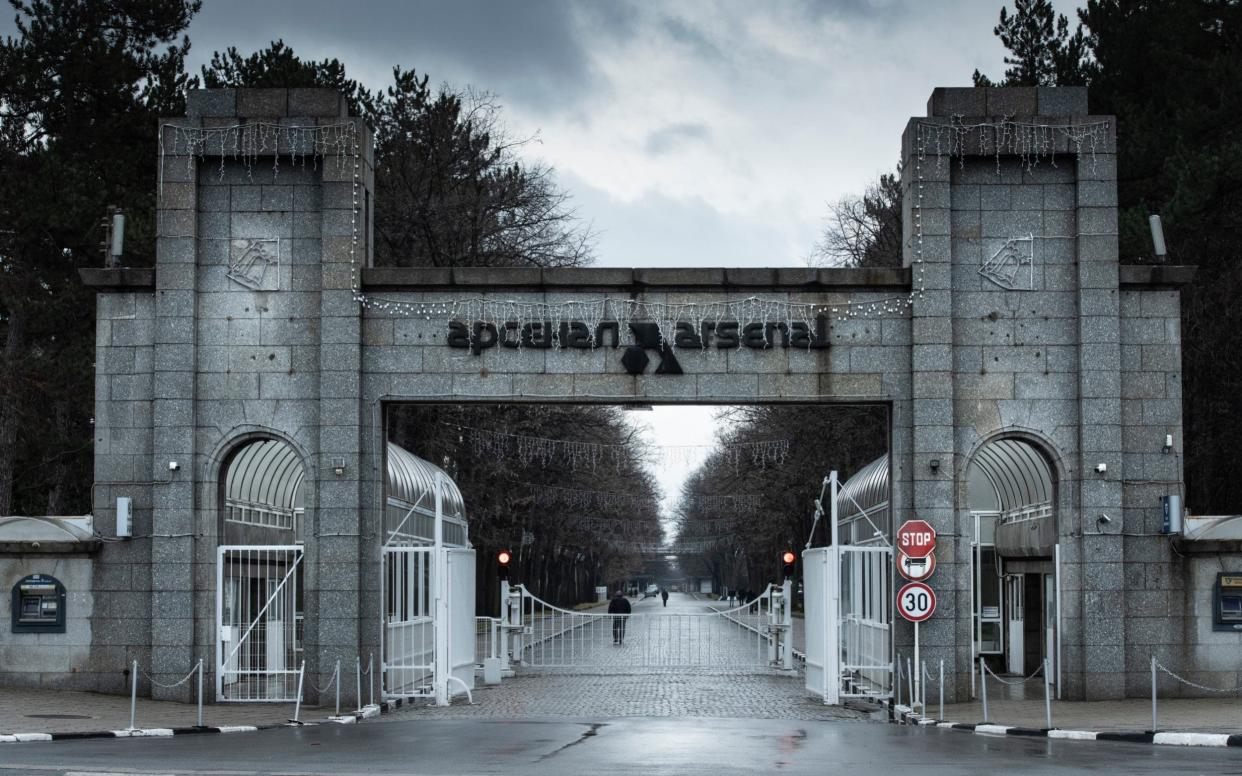
Fittingly for a place that deals in death, the town of Kazanlak does not advertise its wares. Sprawling across a rose-covered valley in central Bulgaria, it looks like any other stretch of the Iron Curtain rust belt, a huddle of drab tower blocks and derelict factories.
In the tourist kiosk in the main square, visitors learn that its main claim to fame is as a rose oil producer, with an annual flower festival and a Princess of the Roses beauty contest.
The real money in Kazanlak, though, comes from the rather less fragrant trade that takes place behind the razor-wired walls of a factory outside town. In Soviet times, the Friedrich Engels Machine Building Plant was officially a car factory, churning out a squat saloon that was Bulgaria’s answer to the Trabant.
In fact, its 20,000 workers made a far more successful Soviet export – the Kalashnikov AK-47 assault rifle. First produced in Russia in 1947, the Kalashnikov was and remains one of the most effective killing machines humankind has known.
During the Cold War, it was Russia’s vast nuclear arsenal that kept minds focused in the West, but it was the lo-tech AK-47, made in Bulgaria and a string of factories throughout Soviet Europe, that fuelled the hot proxy wars that raged across Africa, Asia and Latin America.
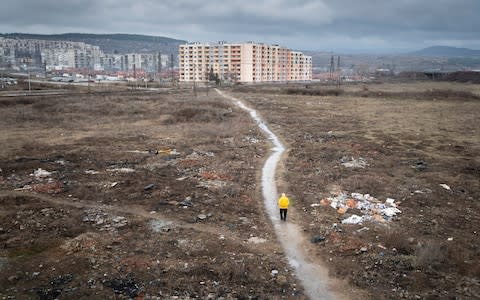
Today, an estimated 100 million are in circulation, equipping revolutionaries, civil war combatants, terrorists and gangsters alike. Cheap to make and near-impossible to break, its mechanism is so simple that a child could use it, and all too many have, from teen armies in Sierra Leone to Isil ‘Cubs’ in Mosul.
According to some estimates, the gun kills up to 250,000 people per year. After communism’s collapse, the factory at Kazanlak – which operates under the trade name Arsenal – nearly went bankrupt, shedding most of its workers and leaving the town of 50,000 all but destitute.
As the Iron Curtain came down, the AK enjoyed what many Western experts thought was its last hoorah. Tens of thousands of surplus weapons held in old Soviet stocks were effectively looted by arms dealers and found their way into the hands of everyone from Rwandan militias to South African mercenaries and Colombian paramilitaries.
Many of the missiles, rockets and Kalashnikovs flown round the world by Viktor Bout, the Russian arms dealer who inspired the film Lord of War, started their journey here in Bulgaria. Almost 30 years on, the production lines in Kazanlak are once again up and running. Its fortunes have been revived by an uptick in global conflicts, and by Bulgaria’s decision to abandon its Moscow allies and join both Nato and the EU.
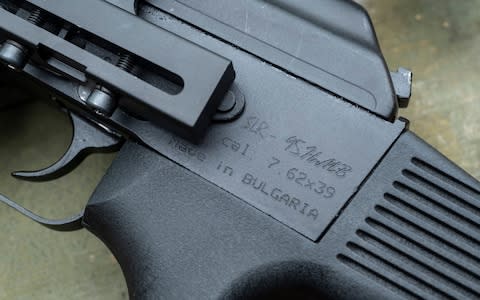
In 2017, Bulgarian arms exports alone topped £1 billion, a level not seen since the fall of the Berlin Wall. All of a sudden, the AK business is booming again. But this time it is under EU control. How, arms-control experts ask, has this been allowed to happen? And what, if anything, should we be doing to stop it? After all, the worry is no longer solely about such weapons falling into hands of child soldiers in the Third World.
One of Arsenal’s lucrative new sidelines is a semi-automatic ‘hunting’ version of its Kalashnikov product, available in shops in Bulgaria and many other EU countries. In the light of the Christchurch massacre, which saw New Zealand ban such weapons, should the EU consider following suit?
Not for nothing is Kazanlak nicknamed ‘the town of guns and roses’. ‘If there is war in the world, the town does well, and if there is peace, it doesn’t. Tragic but true,’ says local resident Stanimir Dimitrov, drinking in a bar at the back of Kazanlak’s huge Soviet-style Grand Hotel. ‘People here don’t think about the fact that the work they do to put food on the table may also blow the head off a child in Somalia. It’s an unpleasant trade, but it brings in a lot of money.’
While the Arsenal factory’s new EU/Nato status has added a Western sense of respectability, the global War on Terror and the bloodbaths sparked by the Arab Spring have driven demand. Today, Arsenal has lucrative contracts to supply AK-47-derived assault rifles and other arms to Western-backed armies in Iraq and Afghanistan.

Another big customer is Saudi Arabia, despite concerns that Riyadh has illegally channelled weapons into the killing fields of Syria and Yemen. To this day, the factory resembles something from a John le Carré thriller. Rising from the winter mist, its imposing front gates have had a fresh lick of paint, and alongside the crumbling watchtowers, there are new hi-tech security cameras.
The company also has a slick new online brochure, which reads as though it sells high-performance cars rather than deadly weapons. Describing itself as a maker of ‘high-quality, competitive products’, it boasts of how new steel and polymer techniques make its assault rifles almost indestructible on the battlefield.
Stress-tests include hurling a loaded weapon a dozen times on to a concrete floor, and firing it in dust storms and at temperatures of -50C. The gun’s banana-shaped magazine can withstand being driven over by a one-ton vehicle. ‘Even after 25,000 shots, no damage will occur’, the brochure assures buyers.
Still, old habits die hard, and even today Arsenal’s carefully cultivated respectability goes hand in hand with a culture of secrecy. The firm’s general director is Nikolay Ibushev, 69, who began his career there in communist times and spent five years as one of its representatives in Syria, where he was rumoured to be close to the late President Hafez al-Assad.
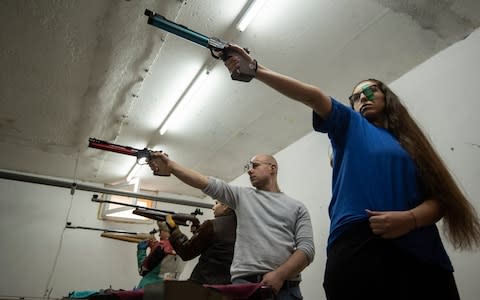
In the 1990s, he successfully steered the company through privatisation, and today is widely respected in the town for keeping its chief employer afloat. Unlike the so-called ‘Thick Necks’ – the gangster-capitalists who ran Bulgarian enterprise in the 1990s – he has no bodyguards and drives a modest company car.
Yet when the Telegraph visited Kazanlak, neither Ibushev nor his son Hristo, Arsenal’s executive director, would be interviewed. One excuse was that the company no longer technically sells Kalashnikovs: these days, it markets its assault rifles as the AR series rather than the AK series, despite them looking all but identical. The other was that all the staff and documents from its Socialist-era past are long gone.
Given that the factory has its own on-site museum, and a company newsletter in which ex-employees reminisce about meeting their fiancées on the production line, it seems unlikely that the firm’s archives have vanished. A more plausible reason for being publicity shy might be growing unease about Eastern European small-arms exports generally – and the blowback they are causing in Europe.
Some of the arms and ammunition Bulgaria supplied to Iraq ended up in the hands of Isil when the Iraqi army fled Mosul in 2014. In November, the Telegraph reported how some 4,000 Soviet-era Kalashnikovs sold to Uganda were illegally sold on to one of the factions in South Sudan’s blood-curdling civil war.
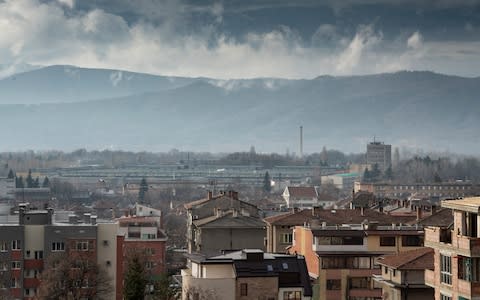
Kalashnikovs also feature in countless murders and robberies on the Continent, although their use is still rare in Britain, at least for the moment. According to Nic Marsh, a small arms expert at Oslo’s Peace Research Institute, some 4,000 machine guns, including AK-47s, are thought to be in circulation in France’s immigrant banlieues alone.
Cold War-era AK-47s from Bosnia, Bulgaria and Albania are also reported to have been used in the Paris terror attacks in 2015, in which 130 died and 494 were injured. Still, according to one local journalist, Ibushev has never been easy to get hold of. ‘He is an important figure round here, but he is like a grey cardinal, he likes to stay silent,’ I was told. ‘It’s not like he’s producing tomatoes, is he?’
A similar omertà is observed by former employees, who in Soviet times were not even allowed to tell their families what the ‘car factory’ really made. At the pensioners’ club in Kazanlak, where ageing Stalin and Yeltsin lookalikes play chess, there is no shortage of ex-Arsenal workers. Many devoted entire lifetimes to lathing gun barrels or assembling trigger blocks. No one wanted to talk.
One exception is former board member Georgei Georgiev, a chain-smoking, crop-haired 56-year-old. He spent five years at Arsenal in the mid-1990s, and used to be an enthusiastic marksman, with his own personally engraved pistol. Today, he runs a bath-towel factory nearby, although that’s not the only reason why it’s hard to imagine him as a merchant of death.

In 2005, he and his female partner became Buddhists after a holiday in India, and he handed his gun collection in to the police. ‘Guns can be evil things, and when I became a Buddhist I preferred not to have them,’ he said. ‘But there are thousands of families here in Kazanlak who depend on this factory for a living. They see themselves just as machinery workers, and besides, all the contracts are signed at government level by politicians. It is never anything to do with people here at Arsenal.’
He remembers how the town all but died in the 1990s when the factory, which employed 20,000 people in communist times, shed all but a tenth of its workforce. Employees went unpaid for months, laid-off workers turned to drink and crime, and many people left Kazanlak for good. It was then that the factory allegedly become involved in under-the-counter deals, leading Western diplomats to dub Bulgaria ‘Europe’s arms bazaar’.
According to a New York Times report from 1998, Arsenal allegedly shipped 35 tons of weapons to a group of rebels in Sierra Leone, using documents that said they were going to Nigeria. It also alleged that Kalashnikovs and other weapons were sent to a violent religious sect in India, with documents saying they were going to the Bangladesh Defence Ministry. Other reports at the time link Arsenal to arms sales to Angola’s Unita fighters and to rebel groups in southern Yemen and the DRC.
At the time, diplomats complained that the EU was doing more to crack down on Bulgaria’s export of pirate compact discs than on weapon sales. It is not clear whether Arsenal’s own management knew of the shipments, although most weapons sales at that time were understood to have been organised and sanctioned by networks of Bulgarian secret service officials.
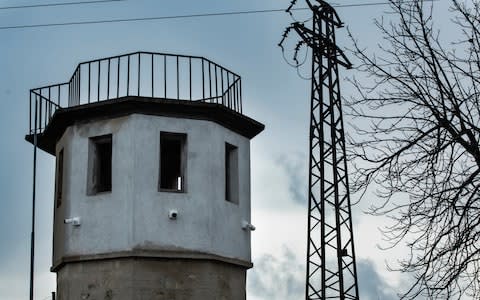
The turning point came in late 2003, when Arsenal signed a US-approved deal to supply the post-Saddam Iraqi army with Kalashnikovs for just $75 a time. Further deals followed, including contracts for pistols, rockets and other weapons. Today, Arsenal employs 10,000 people, making it Bulgaria’s single biggest industrial employer. While Bulgaria is now Europe’s main exporter of Kalashnikovs, Romania, Poland and Hungary are also churning them out under the EU flag.
Russia is not happy about its iconic rifle becoming an EU export success story. But much more alarmed are arms-control experts, who had hoped the widespread distribution of the weapon would tail off under EU supervision. To better understand the power of the AK, I visited Arsenal’s gun shop in Kazanlak, which sells a range of Kalashnikov-style rifles adapted for hunting. They lack the fully automatic mode of the military version, but in most other respects match the real thing.
‘Arsenal’s hunting rifles are very good for shooting wild boar,’ said Dimitar Lutzkanov, the boss of a local rifle range, which stocks them. ‘Hunters like them because they never jam. They’re not like the US Remington, which is pricier but can easily go wrong.’
I’ve seen a few Kalashnikovs while reporting in war zones, but only by firing it does one sense the power it gives the gunman. Learning how to load it is a two-minute job. With no practice at all, I put five rounds in a head-sized target at 50 metres. So much for the stories I’d heard of it being uselessly inaccurate in inexperienced hands.

The idea that such a gun should even be held in private hands is now under renewed scrutiny following March’s massacre in Christchurch, in which white supremacist gunman Brenton Tarrant killed 50 worshippers at a mosque. Following his attack – in which he is reported to have used a US-made AR-15 assault rifle – New Zealand’s government announced a ban on all ‘military style semi-automatics and assault rifles’.
Such a ban already applies in Britain, but not on the Continent. Despite the EU pledging new tighter controls in the wake of the 2015 Paris attacks, getting agreement among 28 different nations with widely differing firearms legislation proved difficult. Thus far, the new curbs have been limited to measures such as restricting the size of weapons’ magazines to no more than 10 shots.
It is the capacity to turn raw amateurs into instant killers that troubled even Mikhail Kalashnikov, the gun’s Russian inventor. An ex-soldier who was wounded in the Second World war, he created it as a weapon that would be easy for fellow squaddies to master, and wouldn’t need constant cleaning and maintenance.
Unlike the American-made M16 and British-made SA80s, it seldom jams, even if covered in dirt. It was why the Vietcong, a poorly trained peasant army, proved such an unexpectedly tough foe against US forces in the Vietnam war. But what was perfect for infantrymen was also perfect for insurgents, terrorists, and thugs pretty much anywhere. As Kalashnikov himself once said, ‘I made it to protect the Motherland. Then it was like a genie out of the bottle, and it walked in directions I did not want.’
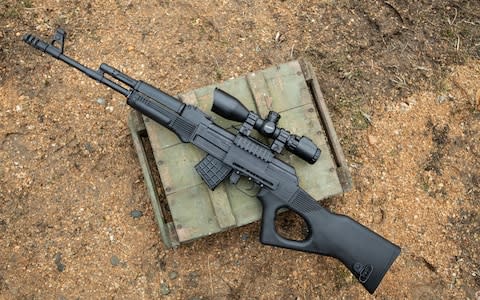
CJ Chivers, author of an acclaimed history of the weapon, spells it out more emphatically. The Kalashnikov, he writes, ‘empowers unflagged and undisciplined forces to commit human rights abuses on a grander scale’. Some arms-control experts compare the AK-47 with anti-personnel mines, which also pose a disproportionate risk to civilians and children.
Yet while mines are now subject to international treaties banning their use, there are no such restrictions on the Kalashnikov. So should Bulgaria, as a responsible EU state, still be producing the weapon at all? Gergana Mikova, the regional governor for Kazanlak, says it is unfair to single out Bulgaria for criticism. Other European countries (including Britain), export far more military hardware, and if Bulgaria did not produce Kalashnikovs, other parts of the world still would. ‘Arms control is a problem for the world overall,’ she adds.
Marsh, of Oslo’s Peace Research Institute, also concedes that in the current climate of global instability, Western powers find it useful to have their own Kalashnikov producer. Not only are Kalashnikovs used by local partners in the War on Terror, the gun is still the weapon of choice in pro-Nato Soviet satellite states such as Ukraine.
‘The problem, though, is that in the long term you may simply be adding to the proliferation of illegal weapons worldwide,’ he says. ‘Plus, the more these arms firms build up production capacity, the more they have to find new markets.’
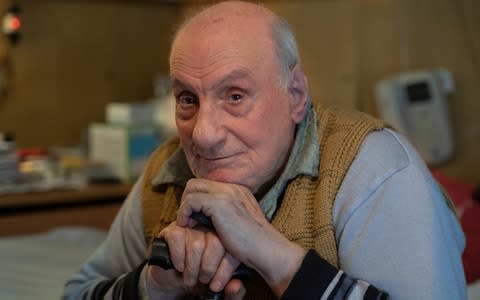
Bodil Valero, a Swedish MEP who is the European Parliament’s rapporteur on arms exports, regrets that the EU did not do more to encourage Eastern Europe to diversify out of weapons production in the 1990s. The European Union, she points out, already has a far bigger arms industry than it needs for its own defence, and with Kalashnikovs in particular, there is far too much risk of them ending up in the wrong hands.
‘A thousand more Kalashnikovs can end up doing more damage than a few tanks,’ she said. ‘It is terrible that we are exporting these weapons, especially when some of the end-user governments are transferring them to people who may be involved in human rights abuses.’
At the Arsenal factory, meanwhile, it is business as usual. The company is seeking new business opportunities across the globe and reigniting old contracts, with sales staff posted to Africa, Asia, and Latin America. At the time of the Telegraph’s visit, staff were headed to the Ivory Coast on a business trip. Browsing the Arsenal company newsletter, one does not detect much in the way of social responsibility.
For example, the very first issue of the company magazine, published in 2011, profiles George Markov, one of Arsenal’s main communist-era Kalashnikov engineers. He reminisces matter-of-factly about his posting to Libya in 1988, where he spent four years helping to run a Kalashnikov factory set up for Colonel Gaddafi.

There is no mention of how at this time, Libya’s dictator had supplied thousands of rifles to the IRA. Or to countless armed groups across Africa, including Sierra Leone’s Revolutionary United Front, notorious for its limb-chopping child-soldier units. So do Arsenal’s bosses really sleep that well? The current management, it would seem, prefers not to engage publicly on that subject. But before we left Kazanlak, we did track down one the company’s Soviet-era bosses.
Sasha Dimitrov, 87, a former factory envoy to Moscow, personally signed the contracts when President Brezhnev gave Bulgaria its Kalashnikov franchise. Ask him about the old days, and he launches into a Politburo-style monologue on the factory’s production history, and of the day he drank vodka with Mikhail Kalashnikov, who praised the quality of the Bulgarian version.
Amid the pride, though, there is a pang of conscience. ‘I worked all my life in military industry, and when I retired, they even gave me a gun as a present,’ he said. ‘But I gave it away, because I always knew that rifles cause innocent people to die.’
Protect yourself and your family by learning more about Global Health Security

 Yahoo News
Yahoo News 
